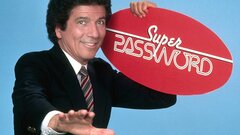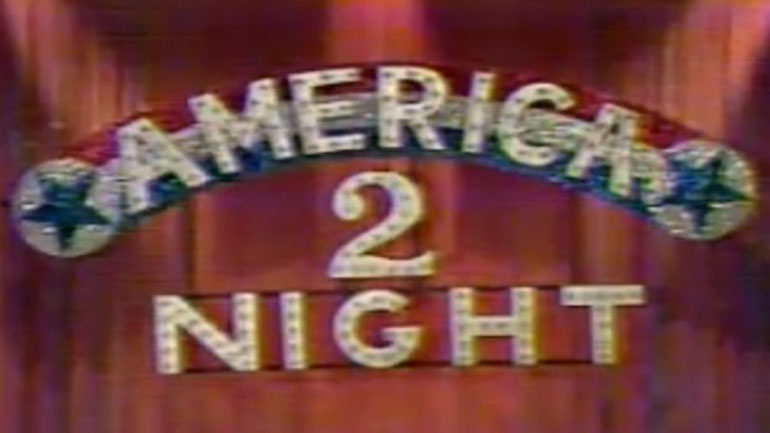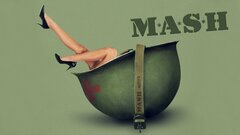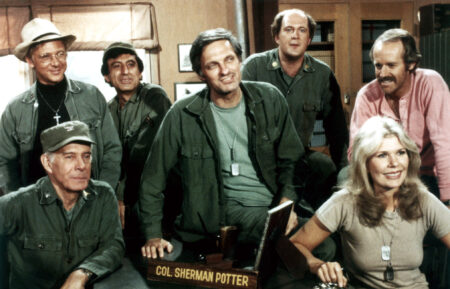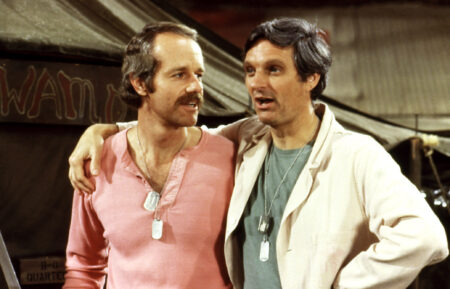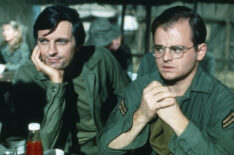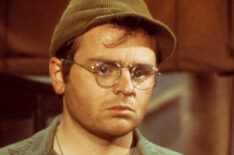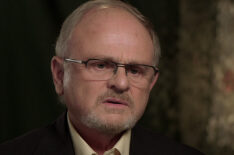Behind the knit cap, wire-frame glasses, and gee-whiz enthusiasm of Radar O'Reilly, company clerk of the 4077th M*A*S*H unit, was the lesser-known actor, Gary Burghoff. He was recognized by cable-watching audiences mainly for his role on the TV series "M*A*S*H" (CBS, 1972-79) and his appearances in vacation time share infomercials, neither of which hinted at his depths as a prolific painter, musician, stage actor, inventor, and animal rights champion with a seemingly endless supply of creative energy and compassion.
Gary Burghoff was born on May 24, 1943, in Bristol, CT, making him yes - nearly 30 years old when he was cast in his most notorious role as teenaged Radar O'Reilly in the film "M*A*S*H" (1970). Standing only 5'6" and equipped with a high speaking voice, Burghoff discovered early on that his acting roles were going to be limited - at least until he got a few wrinkles or some grey hair. In fact, Burghoff was born with several qualities that might have kept a lesser spirit out of the game, including a club foot (he began learning tap dancing at age five) and several deformed fingers on his left hand (he studied jazz drumming with considerable success).
This son of an executive and a local theater director-professional dancer was artistically inclined from the beginning, with acting aspirations from the age of four and the recipient of art awards while still in high school. Burghoff's teenage years were spent doing school productions of Shakespeare in Delevan, WI, and playing drums in jazz groups. Then he headed to New York for serious training, studying voice and acting with such influential figures as Sanford Meisner (originator of the Meisner Technique of acting) and James Tuttle, as well as comedic theater with Charles Nelson Reilly - with whom he would reunite on Gene Rayburn's "Match Game" (CBS, 1973-1982) decades later.
He paid his dues on the musical and dramatic stages of New York until 1967 when he was cast in the title role of the first production of "You're a Good Man, Charlie Brown." In an interesting showbiz footnote, future Christopher Guest ensemble player Bob Balaban was also in the production, toting a blanket as Linus. What began as an off-Broadway show at the St. Mark's Theater turned into a career catapult for Burghoff, who went on to recording on the perennial favorite You're A Good Man, Charlie Brown cast album and doing voice-overs for animated Charlie Brown TV adaptations. He relocated to Los Angeles and picked up a few TV gigs, including regular appearances on "The Don Knotts Show" (NBC, 1970-71). In California, he took his lifelong love of wildlife - the subject of his oil paintings since he was a kid - to the next step and became licensed by the State of California to care for wounded animals in his yard. At the time, his was the only licensed bird sanctuary in California, and locals knew the soon-to-be-famous actor as "The Birdman of Malibu" who had a yard full of pelicans and other stray creatures.
In 1970, Burghoff got his big movie break when he was cast in Robert Altman's political comedy "M*A*S*H." The film and subsequent television series followed a team of doctors and staff stationed at the 4077th Mobile Army Surgical Hospital in Korea during the Korean War; both were groundbreaking for how they addressed the horrors of war using sophisticated, dark humor. Burghoff's character, Corporal Walter "Radar" O'Reilly was the company clerk - a fresh-faced Midwestern kid with an uncanny ability to sense incoming choppers, anticipate company needs, and finish the Lieutenant Colonel's sentences. Still a relative newcomer to the professional acting game, Burghoff was thrown into the trenches and held his own among heavy-hitting actors like Donald Sutherland, Elliot Gould, and Robert Duvall.
When CBS turned the Golden Globe-winning film into a half hour sitcom in 1972, Burghoff was the only principal actor invited to reprise his role. He and creative executive Larry Gelbart worked together to further develop Radar for the series, shaping features that would play well against the sophistication of doctors like Hawkeye and Winchester. They focused on Radar's youthful naiveté (introducing a teddy bear brought from home and a penchant for Nehi grape soda), his background on the family farm in Otumna, IA, and even incorporated the actor's own love of wildlife to juxtapose his human sensitivity with the horrors of war. Their instincts were right on the mark, and Burghoff was recognized with an Emmy for Best Supporting Actor in a Comedy Series in 1977. He was unable to attend the award ceremony, but fellow cast member Alan Alda glowed on his behalf: "It gives me an opportunity to tell the world what a wonderful, gifted and outstanding person Gary Burghoff is - something he, of course, would not say about himself."
Steady, challenging work on a critically-hailed TV show was a blessing for any actor, but for one with a young family, the long hours on set took a toll. By season three, Burghoff had renegotiated his contract and limited his appearances to 13 episodes per season instead of the usual 24. By season seven, the full-on burn-out had set in. Producers wrote Radar's discharge into the end of season seven only to have CBS execs demand his return for two episodes of season eight - the two-part series farewell. The company clerk who came to Korea a boy, left as a man, leaving his teddy bear behind as a symbol. Burghoff reprised his role in two short-lived "M*A*S*H" spin-offs, including "AfterM*A*S*H" (CBS, 1983-85), where several vets of the 4077th reunited at a VA hospital, and "W*A*L*T*E*R," where he starred post-war Radar, as a St. Louis cop.
The end of the "M*A*S*H" franchise was hardly the end of Burghoff's creative career. Always a prolific wildlife painter, he now had time to show his work at art galleries across the country, and devote time to wildlife causes. This passion was called upon in 1999 when he hosted the PBS series "Pets: Part of the Family," which ran for several seasons and earned Burghoff a Daytime Emmy for "Outstanding Service Show Host." He also hit the stage again on a regular basis, directing the political satire "The Buck Stops Where?" in 1997 and performing in a 110-city tour of Neil Simon's "Last of the Red Hot Lovers," in 1999. His drumming performances had dwindled, but a review of his lifetime gig roster would show that he had worked with Al Hirt, Maynard Ferguson, Lennie Neuhaus, and Pete Fountain as well as Big Band Revivalists "The Atlantic Jazz Orchestra." One of his own bands, The Mardi Gras Celebration Jazz Band, recorded an album called "Just for Fun" in 1980.
Burghoff was also an active entrepreneur and inventor, opening a chain of frozen yogurt shops in Hawaii in the 1970s, and then patenting a "fish attractor device," an "enhanced fish attractor device," a fishing rod design, and an "ornamental design for a toilet seat lifting handle." His greatest commercial invention was Chum Magic, a bait-filled container that sat on top of the water's surface and was said to attract 300 percent more catches.
In 2006, Burghoff was a contributor to the inspirational book How Do You Know He's Real? Celebrity Reflections on Christ, where he and 39 other public figures shared their personal spiritual experiences.







